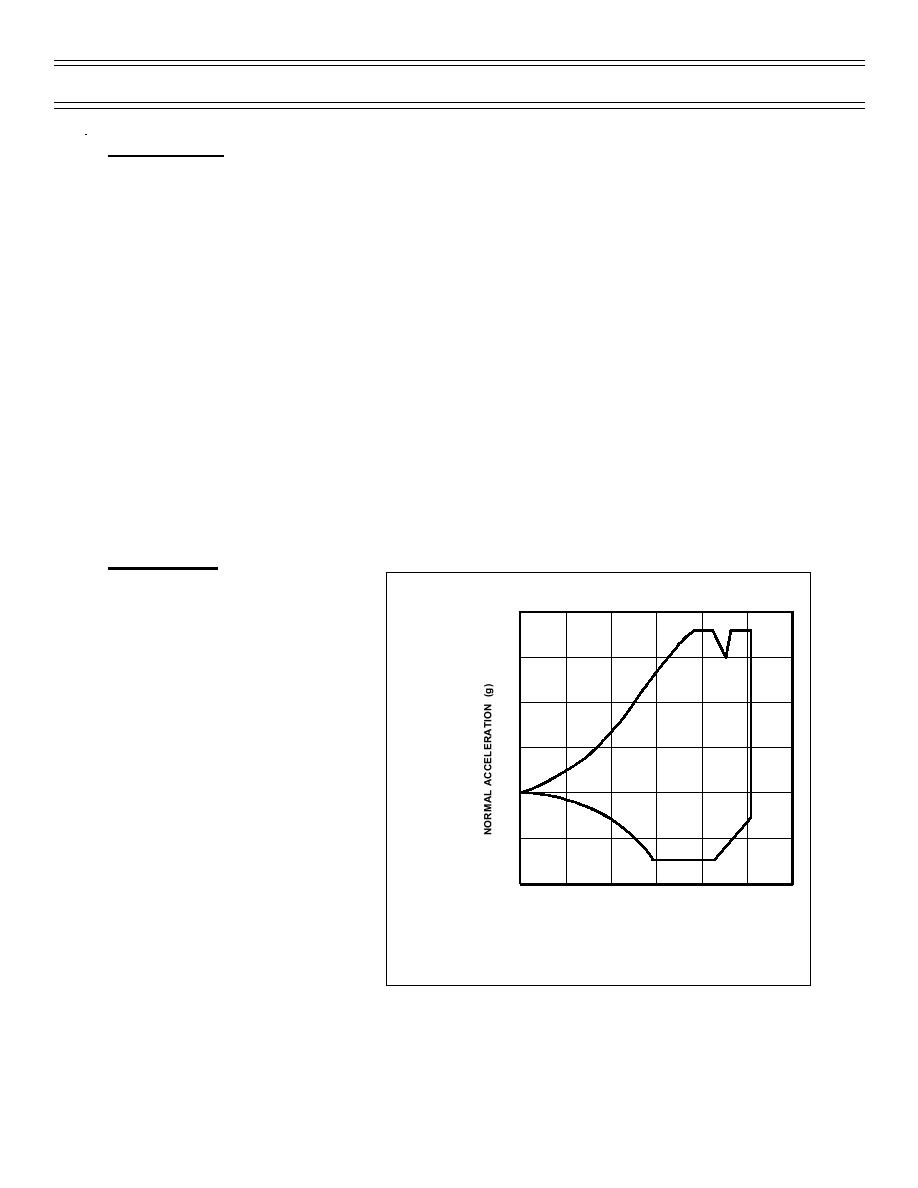
Air Combat Maneuvering
Background
Variable Factors
Other factors that will vary in the ACM arena include your altitude, airspeed, angle of attack (AOA), and
g— the “snapshot” that gives you the parameters to make the instantaneous decisions that will be
demanded of you. Two other influencing factors—turn radius (TAS2/g), and turn rate (g/TAS)—are
dependent on the above factors and will change over the course of the fight according to the type of
maneuver you choose. Although some of these decisions are limited by the aircraft characteristics, each
action you take during an engagement will affect aircraft performance.
Altitude provides potential energy (PE) for maneuvering. Airspeed is kinetic energy (KE). At a specific
AOA, the Cl and Cd for a given wing remain relatively constant regardless of airspeed, g, and altitude.
Depending upon the type of turn you choose, the optimum AOA reflects the lift-to-drag ratio for the desired
performance. In a given situation which dictates the type of turn you need to make, the optimum AOAs
will vary. Knowing and using the cornering speed and the appropriate AOAs give you the most bang for
the buck—the best turn performance for the minimum amount of energy loss. They are delineated for you
in the “energy management” section of the FTI.
The fixed and variable factors begin to interrelate. G is the ratio of lift to weight. As you know, in turns or
direction changes, lift must exceed weight, and you must apply g loads greater than 1. At a constant TAS,
to increase g, you must increase the AOA. Radial g will dictate the turn radius and rate. Maximum
instantaneous g is the maximum lift a wing may generate at a given airspeed. Maximum instantaneous g
is dependent upon the aircraft airframe capabilities. The max instantaneous g, displayed on the Vn
diagram, generates the maximum instantaneous rate of turn.
Total Energy (TE)
Total energy (TE) is the combination of
the aircraft’s altitude (PE) and
8.0
airspeed (KE). TE will be referred to
Vn DIAG RA M
as your “energy package” and will vary
FO R T-45C
according to your situation. Although
6.0
Specific Data TBD
determining the TE advantage for a
given aircraft is difficult because of the
4.0
possible speed differences between
fighters, TE remains a vital factor for
determining relative advantage.
2.0
In addition to the Vn diagram, specific
excess power (PS) curves measure
0.0
the capability of an aircraft to increase
its energy state by using excess
-2.0
thrust. Because you will be fighting a
similar aircraft in training, these curves
-4.0
are less important now than they will
0.0
0.2
0.4
0.6
0.8
1.0
1.2
be in the fleet. When you
Mach
superimpose your PS curve over that of
another type aircraft, you can compare
where one aircraft may have
Figure 5: T-45C Vn DIAGRAM
capabilities over another. Your
comparison will directly influence the type of tactics and strategies you employ against another aircraft.
For our purposes in the Training Command, cornering speed and the optimum AOAs are the most
important indicators of maximum performance. Cornering speed, introduced as “maneuvering speed” in
Aerodynamics, is indicated on the Vn diagram and is defined as the minimum airspeed at which you can
pull the max g (the structural limit of the aircraft). In an ACM environment, cornering speed is that
airspeed at which the aircraft can attain the maximum turn rate and the minimum turn radius. Below this
Page 7
T-45C Revision 1



 Previous Page
Previous Page
